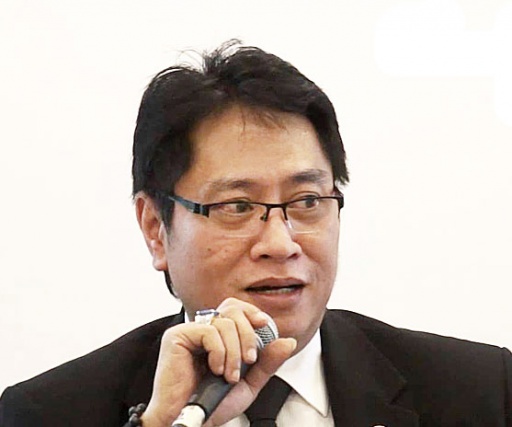Head of Asia trade talks warns against adding elements of Trump-derailed TPP into new pact

Bloomberg| 23 March 2017
Head of Asia trade talks warns against adding elements of Trump-derailed TPP into new pactt
The chief negotiator of a 16-nation Asia trade pact expressed hope that talks can be concluded this year if member nations refrain from introducing elements of a separate deal derailed by U.S. President Donald Trump.
Iman Pambagyo, trade negotiating committee chief for the Regional Comprehensive Economic Partnership, said that governments had the political will to conclude the deal despite differences on goods and services, in part to send a message in the face of rising protectionism elsewhere. Only 10 percent of the text has been completed, he said.
“My best bet would be for the RCEP to be signed sometime next year,” Pambagyo said at a forum in Singapore on Wednesday. “I am quite optimistic, somehow the market access negotiation and the text-based negotiation could be concluded sometime this year.”
Still, he said member nations — including China, India, South Korea, Japan and Australia, alongside Southeast Asian countries — will need to accept the majority view on some issues. He urged RCEP members to avoid importing parts of the 12-nation Trans-Pacific Partnership, which Trump exited in one of his first acts as president.
“My immediate response is simply don’t TPP-enize this RCEP,” said Pambagyo, who is director-general of international negotiations with Indonesia’s Trade Ministry. “Be focused, this is our homework, we have to complete this before we talk about other zoos.”
The RCEP was conceived as an expansion of Southeast Asian trade ties with China, India, Australia and Japan. It would cover almost half the world’s population and 30 percent of the global economy.
Trump’s withdrawal from the TPP — a deal that didn’t include China — has spurred Beijing to publicly advocate for the RCEP to be finished quickly. More broadly, President Xi Jinping has championed free trade and globalization, including supporting bodies like the World Trade Organization. That’s led to a debate about whether it’s best to get RCEP done fast, to show support for free trade, or to take time to get the best deal possible.
The RCEP covers investment, intellectual property and economic and technical cooperation. It would introduce dispute-resolution mechanisms. Unlike the TPP it wouldn’t require members to protect labor rights or improve environmental standards. Like the TPP, big stumbling blocks stand in the way of a final deal.
“I heard from many corners, now RCEP is the only game in town,” said Pambagyo. “If you look at the discussion in many parts of the world — basically anti-globalization, anti-trade — those discussions have not taken place in this part of the world, in particular among the RCEP.”
India is arguing for greater liberalization of services, a sector that contributes over 50 percent to its gross domestic product and affects the movement of labor across borders. A particular sticking point is loosening rules to make it easier for its IT workers to move abroad.
The next round of talks will be held in Manila in May, with a ministerial meeting expected that month. After that the talks shift to India.
Pambagyo gave some insight into the mammoth task of trying to get an agreement among a disparate group of nations, from less developed economies like Laos to China, the world’s second-biggest economy.
He said the last RCEP talks in Japan saw around 700 officials gather, up from 60 delegates in 2013. The RCEP now has nearly 10 working groups, plus half a dozen subworking groups on goods and services and discussions about adding more.
The text discussions are bogged down for several reasons, he added. Some countries want to finish one area before tackling another. Some have the same officials assigned to two or more working groups, so talks can’t happen in parallel. And some nations feel there’s no need to rush because the market access issues are tough to resolve.
Other difficulties come because not every country has an existing free-trade agreement with other parties, making negotiators cautious about tabling their offers on tariffs, he said. India for one has a sizable trade deficit with China: the countries have periodic tensions over a long-running border dispute and are vying for influence in parts of South Asia. They do not have a bilateral trade deal.
“It is quite interesting how the two big economies see each other,” Pambagyo said. “In some rounds, discussions were really about India and China.”
As well, disputes between some RCEP nations over their sideline talks on bilateral trade deals can bleed into the negotiations, Pambagyo said. “At some points, I say you sit together there, why don’t you just talk together?” he said. “Actually they are sitting next to each other in the room but they always go to the chair.”
“Why don’t you just find a separate room and sit together and sort your problems and report back to us?





